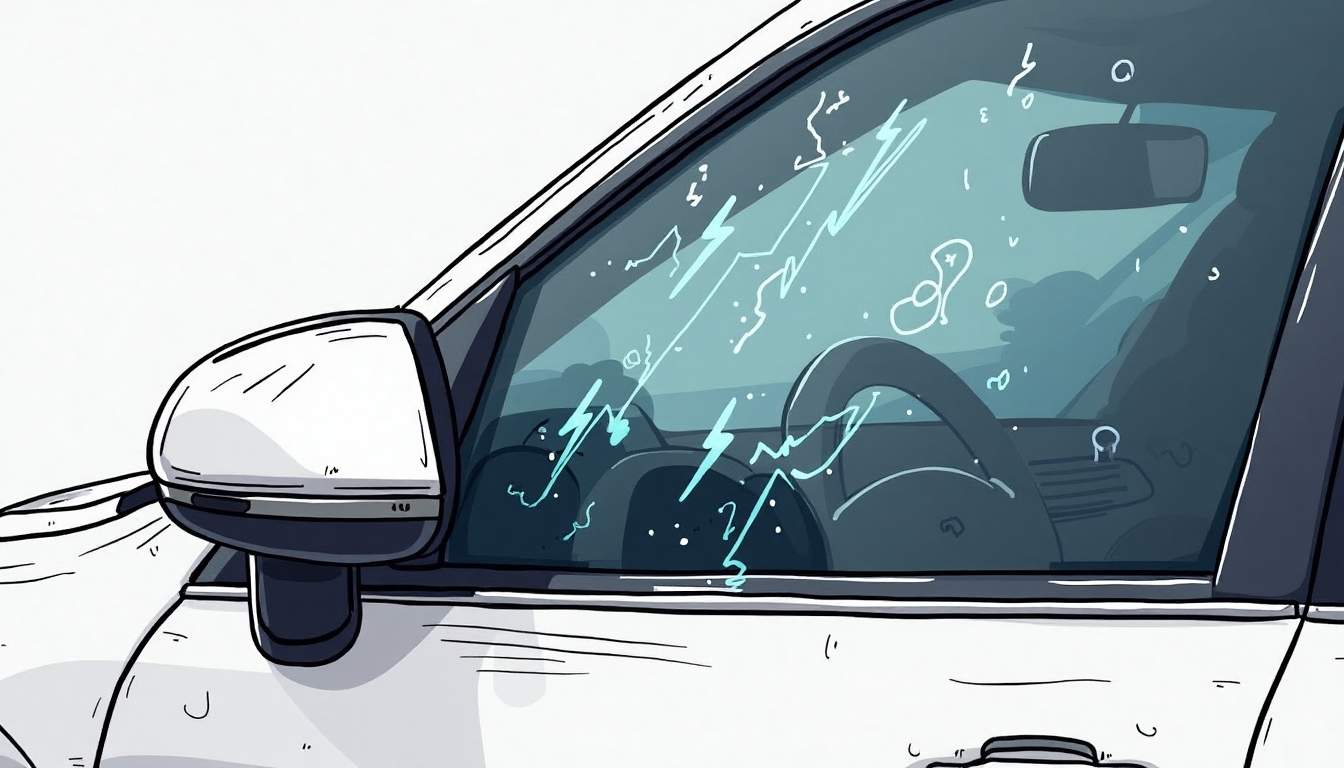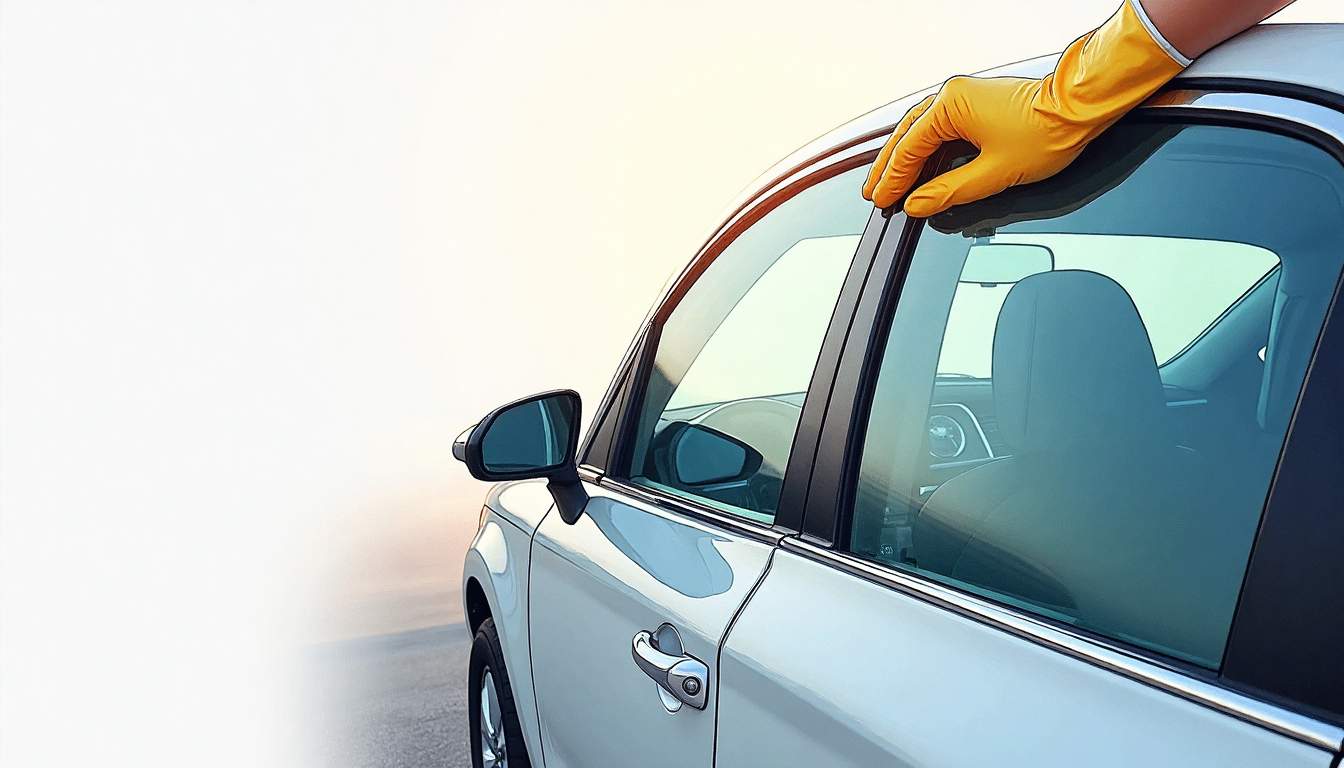views
This comprehensive guide will walk you through everything you need to know about maintaining your tinted windows, from cleaning techniques to avoiding common pitfalls. Whether you’re a car owner or managing a home or office with tinted glass, these tips will help you enjoy crystal-clear, long-lasting tint.
Understanding Window Tint and Its Vulnerabilities
Before diving into maintenance, it’s helpful to understand what window tint is and why it requires special care. Window tinting films are typically made from polyester and applied to the interior surface of glass. They often have additional coatings for UV protection and heat rejection. The primary purpose of window tinting is to enhance privacy, reduce glare, and protect the interior of vehicles or buildings from harmful UV rays, which can lead to skin damage and fading of furnishings.

Because tint films are thin and delicate, they can be damaged by harsh chemicals, abrasive materials, or improper cleaning methods. Exposure to direct sunlight over time can also cause fading or discoloration if the tint is low quality. Recognizing these vulnerabilities helps in choosing the right maintenance approach. It's also important to note that the quality of the installation plays a significant role in the longevity of the tint; a professional installation can mitigate many common issues associated with poor application techniques.
Common Issues That Affect Tinted Windows
Some of the most frequent problems with tinted windows include bubbling, peeling, scratching, and cloudiness. Bubbling usually occurs when moisture gets trapped between the film and glass, often due to poor installation or damage. Peeling can happen if the adhesive weakens, sometimes from using the wrong cleaning products. Additionally, environmental factors such as extreme temperatures and humidity can exacerbate these issues, leading to a shorter lifespan for the tint. Scratches may result from abrasive cloths or dirt particles rubbing against the film, while cloudiness often develops from chemical damage or prolonged sun exposure. Preventing these issues starts with understanding what causes them and how to avoid those triggers. For instance, using a soft microfiber cloth for cleaning can significantly reduce the risk of scratches, while opting for pH-balanced cleaning solutions ensures that the tint remains intact. Regular inspections of the tinted windows can also help catch any early signs of damage, allowing for timely repairs that can extend the life of the tint and maintain its aesthetic appeal. For expert advice and professional service, visit OC Tint Solutions to ensure your window tint stays in top condition.
Proper Cleaning Techniques for Tinted Windows
Cleaning tinted windows requires a gentle approach to preserve the film’s integrity. Using the wrong cleaning agents or tools can cause irreversible damage. Here’s how to clean your tinted windows safely and effectively.
Choosing the Right Cleaning Products
Always opt for a mild, ammonia-free cleaner. Ammonia-based products can break down the adhesive and cause the tint to peel or discolor. Instead, use a mixture of warm water and a few drops of dish soap or a dedicated automotive glass cleaner formulated for tinted windows.
For stubborn spots, such as bird droppings or sap, apply the cleaner and let it sit briefly to soften the residue before wiping gently. Avoid harsh solvents or abrasive cleaners that can scratch or degrade the film. Additionally, consider using a vinegar and water solution in a 1:1 ratio as a natural alternative, which can effectively cut through grime without harming the tint.
Using the Appropriate Cleaning Tools
Soft microfiber cloths are ideal for cleaning tinted windows. They trap dirt and dust without scratching the surface. Avoid paper towels, rough sponges, or brushes with stiff bristles, as these can cause micro-abrasions on the tint film.
When wiping, use gentle, circular motions rather than aggressive scrubbing. This minimizes the risk of damaging the film while effectively removing dirt and grime. For added convenience, consider using a squeegee designed for automotive use, ensuring it has a soft rubber blade to avoid scratching the tint.
Step-by-Step Cleaning Process
1. Rinse the window with clean water to remove loose dirt and debris.
2. Spray the mild cleaner onto the microfiber cloth rather than directly on the glass to control the amount used.
3. Wipe the window gently in circular motions, covering all areas.
4. Use a dry microfiber cloth to buff the glass and remove any streaks or moisture.
5. Repeat if necessary, but avoid over-cleaning which can wear down the tint over time.
It’s also important to consider the time of day when cleaning your tinted windows. Ideally, choose a cooler part of the day, such as early morning or late afternoon, to prevent the cleaner from drying too quickly on the glass. This allows for a more thorough clean and reduces the chance of streaks forming. Additionally, if your vehicle is parked in direct sunlight, the heat can cause the cleaning solution to evaporate too fast, making it less effective. Taking these factors into account can significantly enhance your cleaning results.
Regular maintenance is key to keeping your tinted windows looking pristine. In addition to routine cleaning, inspect your windows periodically for any signs of bubbling or peeling. Addressing these issues early can prevent further damage and ensure that your tint remains in excellent condition for years to come. Remember, a well-maintained tint not only enhances the aesthetic appeal of your vehicle but also provides essential UV protection and privacy.
Preventive Measures to Protect Your Tinted Windows
Besides cleaning, several preventive measures can extend the life and clarity of your tinted windows. These practices help shield the film from damage caused by environmental factors and everyday use.

Avoid Direct Contact With Sharp or Abrasive Objects
When rolling down car windows or cleaning, be mindful of jewelry, keys, or other sharp objects that can scratch the tint. Even minor scratches can accumulate and reduce clarity.
Inside buildings, avoid leaning heavy furniture or equipment against tinted glass surfaces. If you need to move items near the windows, take care to prevent accidental contact.
Limit Exposure to Harsh Sunlight and Heat
Although window tint helps reduce heat, excessive and prolonged exposure to intense sunlight can still degrade the film over time. Parking in shaded areas or using sunshades can help protect your tinted windows from UV damage and fading.
For home or office windows, consider installing blinds or curtains to reduce direct sunlight during peak hours. This not only preserves the tint but also improves overall comfort indoors.
Be Cautious With Window Treatments and Accessories
Some aftermarket window treatments, such as certain types of window cleaners, adhesives, or stickers, can harm tinted films. Always check product labels and manufacturer recommendations before applying anything to tinted surfaces.
Additionally, avoid using razors or sharp tools to remove debris or frost from tinted windows, as these can easily scratch or peel the film.
Addressing Common Problems and When to Seek Professional Help
Despite best efforts, issues with tinted windows can sometimes arise. Knowing how to address minor problems and when to consult a professional can save time and money.
Dealing With Bubbles and Peeling
If you notice small bubbles forming under the tint film, it may be due to trapped moisture or poor installation. Minor bubbles sometimes dissipate on their own, but persistent or spreading bubbles usually require professional attention.
Peeling edges are a sign that the adhesive is failing. Attempting to fix peeling yourself often causes more damage. A tint specialist can reapply or replace the film to restore appearance and protection.
Removing Scratches and Cloudiness
Light scratches might be minimized by polishing with specialized products designed for tinted windows, but caution is advised. Over-polishing can thin the film and reduce its effectiveness.
Cloudiness or discoloration often indicates chemical damage or aging of the tint. Unfortunately, this usually means the film needs replacing. Regular maintenance and gentle cleaning can help prevent these problems.
When to Replace Your Window Tint
Window tint typically lasts between 5 to 10 years depending on quality and exposure. If you experience persistent bubbling, peeling, fading, or cloudiness that cleaning and minor repairs cannot fix, it’s time to consider replacement.
Professional installers can recommend the best films for your needs and ensure proper application to maximize longevity and performance.
Additional Tips for Long-Term Tint Care
Maintaining tinted windows is an ongoing process. Incorporate these additional tips into your routine to keep your tint looking fresh and clear for years to come.

Regular Inspections
Periodically inspect your tinted windows for signs of damage or wear. Early detection allows you to address minor issues before they escalate.
Check for bubbles, scratches, peeling edges, or discoloration, especially after extreme weather or cleaning sessions.
Maintain Interior Cleanliness
For vehicle windows, keep the interior glass surfaces clean to reduce dirt buildup that can scratch the tint from the inside. Use gentle cleaners and microfiber cloths inside as well.
In buildings, dust and clean window sills and frames regularly to prevent debris from scratching or damaging the tint.
Follow Manufacturer Guidelines
Always adhere to care instructions provided by the tint manufacturer or installer. They often include specific recommendations tailored to the type of film used.
Following these guidelines ensures you don’t inadvertently void warranties or cause damage through improper maintenance.
Conclusion
Proper maintenance of tinted windows is key to preserving their clarity, appearance, and protective benefits over time. By understanding the nature of tint films, using gentle cleaning methods, taking preventive measures, and addressing issues promptly, you can enjoy the advantages of tinted glass for many years.
Whether on a car, home, or office, tinted windows enhance comfort and style. With the right care, they will continue to do so without compromise. Remember, when in doubt, consulting a professional installer or tint specialist can provide valuable guidance and service to keep your windows looking their best.



Comments
0 comment